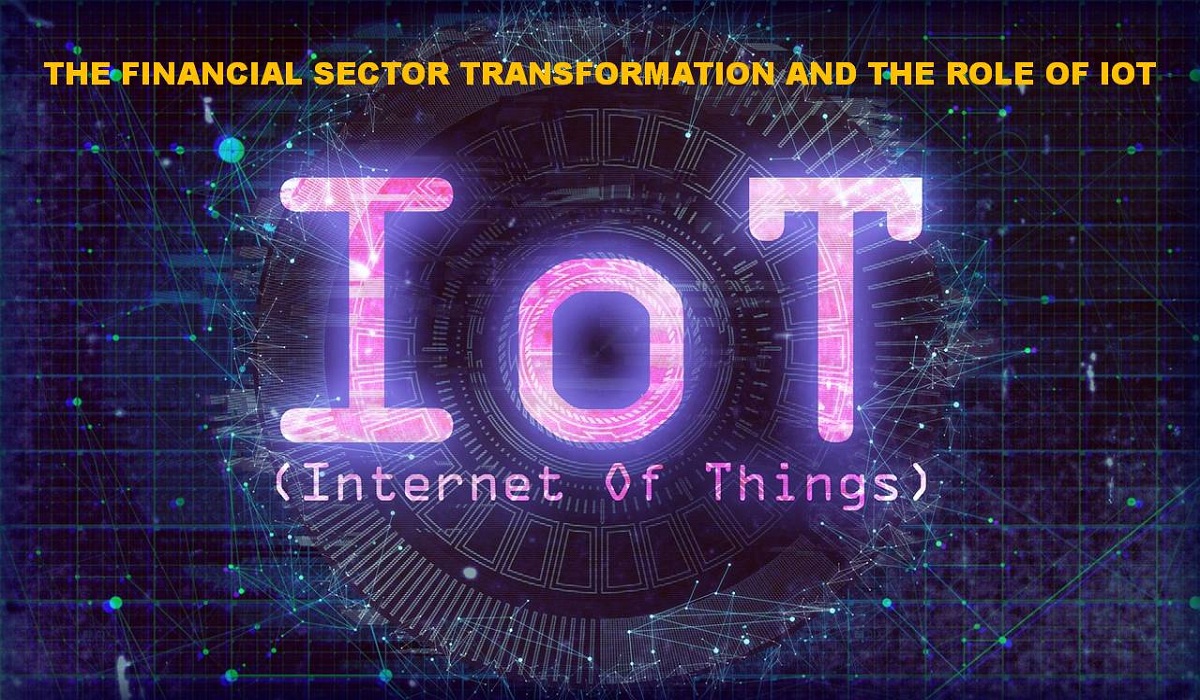The financial sector has undergone different transformational touches in the past few years, it is moving consistently with the changing times, and it may not be surprising to observe these changes. This is because the industry is flexible enough to adapt to various technological innovations.
Among other things, the Internet of Things (IoT) trend is presently hitting financial institutions with a wave that is rewriting its story forever.
Table of Contents
What is IoT (Internet of Things)?
The IoT (Internet of Things) refers to interconnected objects and technologies which are capable of sharing data and resources over an established network. Though still at a developing stage, analyses confirm the potential of IoT to turn the world around, including the financial sector.
Following the results of their study, General Electric says that by the next two decades, the Internet of Things (IoT) would have added up to $15 trillion to the global gross domestic product (GDP).
In a similar study, IDC suggests that the introduction of IoT in the financial sector will yield about US$1.9 billion in annual sales come 2020. These statistics show, without a doubt that the future of rendering financial services has taken a new turn.
The entire idea of IoT is to build interconnectedness across many channels or platforms; this can be achieved with smartphones, computers, and many other electronic gadgets. IoT has a major objective of removing barriers to the efficiency of the services we render.
It serves in many ways to build a better, stronger, and efficient financial sector, some of its many functions include:
IoT – Security over Smartcard Transactions
One of the challenges that faced the introduction of online transactions was security, fraudulent activities instilled fear into users of cards, and it was seen as a “risk” to make payments using smartcards.
However, with the arrival of such technologies as biometric verification, tokens, among others, it has become easier to lay hold on people’s data and monitor their transactions. This translates into safety because biometric programs, for instance, are there to check fingerprints, and no two individuals have the same prints on their fingers. This way, fraud is drastically reduced.
There are also smart ATMs that can be operated through mobile apps, thus making it difficult for fraudsters to withdraw, even when they have your card and PIN. The connected mobile app must initiate the transaction before a successful withdrawal can be made.
Automated Financial Transactions
IoT has proven to be the future of contemporary commerce/trading, most payments made around the world are becoming technology-controlled.
The need for human intermediaries has been cut off. There is a platform known as the Internet of Value on which the majority of high-ranking financial institutions are working to ensure security.
The Internet of Value is structured to connect and monitor global trading activities through such means as mobile apps, smart sensors, and bitcoin. It is now easier to perform transactions without the compromise of financial values.
Transparency is Ensured
Many institutions are already enjoying this remarkable advantage from the use of IoT technologies. It helps them monitor a wide range of financial metrics. Banks, for instance, can now determine the credit-worthiness of their customers through biometrics.
They can trace the credit history of each customer and separate bad debtors from credit-worthy ones. This can assist them in offering loans and other assistance to the right people.
IoT has also helped Insurance companies to escape “blind insurance”. These companies can attach sensors to automobiles or use mobile apps to retrieve information on the usage of vehicles – driver’s tactfulness and the number of times that driving took place. This helps them to determine the kind of insurance suitable for each driver, thereby saving them funds which could have been spent on reckless drivers or on over-used automobiles.
Improved Accessibility
Given its many benefits, banking as it were, has become widespread even to people in rural areas. However, erecting physical structures in all of these rural areas is not easy to achieve. IoT steps into this condition to close the gap; many people now depend on their IoT enabled devices to perform transactions, even from the remotest areas.
IoT technology allows banks to cover larger bandwidths in delivering their services. In Africa, most businesses now resort to IoT devices as the primary channel for managing their financial activities.
This is advantageous on both sides, the rural dwellers get to enjoy banking/financial services, and the bank, on the other hand, is granted access to new markets/customers. In no little way, IoT also helps in establishing productive relationships between the banks and their customers.
Real-time Data for Capital Investment
Making investments is saddled with too many uncertainties; this has been the dilemma of investors who are always employing various strategies/algorithms to reduce risk. With the introduction of IoT technology, it has become easier to make investment decisions.
This is because different connected devices can now provide relevant real-time data, and within a shorter timeframe as well. Manufacturers, farmers, and business owners can now take advantage of the most recent information from their system-generated data to make quick adjustments in their investment strategies.
IoT devices can be used to factor crop output/viability that can be used to estimate its potential value before venturing into production. It enables investors to determine the most lucrative sector and the most feasible time to divert funds from one investment to another. This does not have to take a long time, sensors provide quick and up-to-date data.
IoT- The Future Is Here
It won’t be out of place to quip that any financial service institution that’s not yet leveraging the innovation of IoT is likely to remain backward. Weighed on any matrix, IoT stands out to help the financial sector save time and work with improved smartness.
Research suggests that many more gadgets – smartphones, wristwatches, shirts, among others, shall be available and of course, interconnected by the year 2020. For small and large businesses alike, failing to recognize and adapt IoT to their day to day operations could amount to taking backward steps.

Emily Jacobs is Happiness Ambassador for SpeedCheck.org
She loves to write the latest technology trends and love to share her knowledge through her articles.

